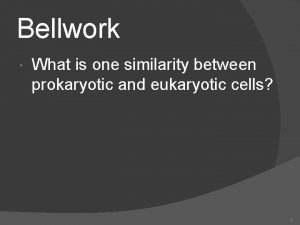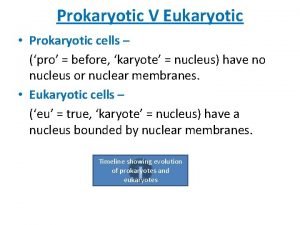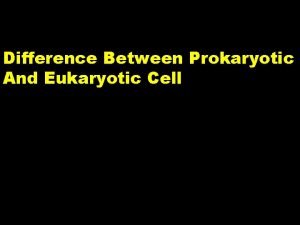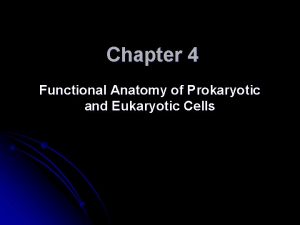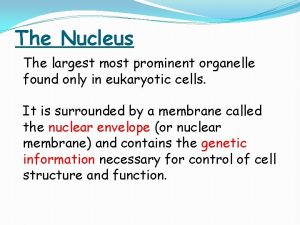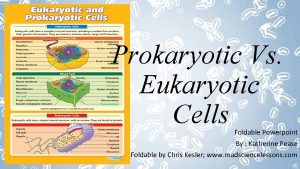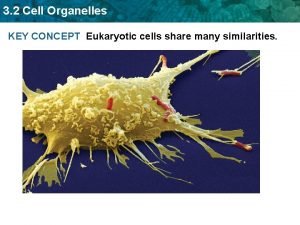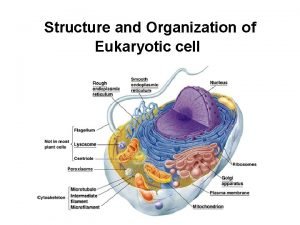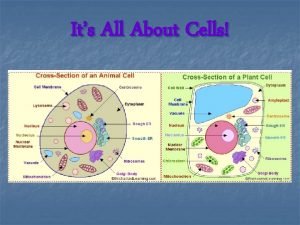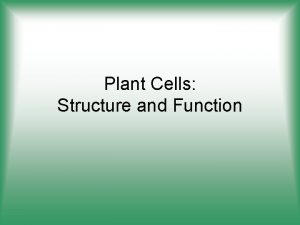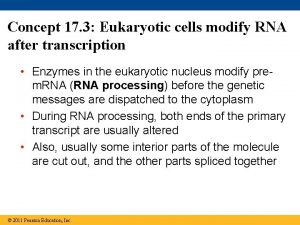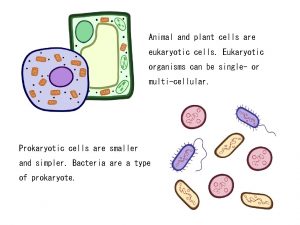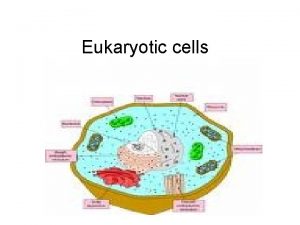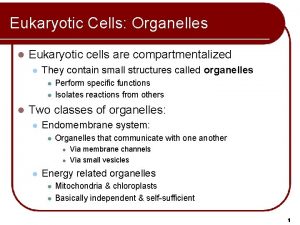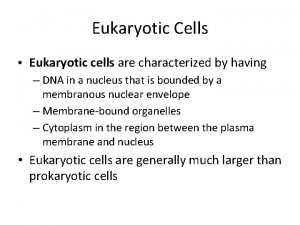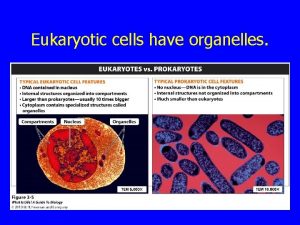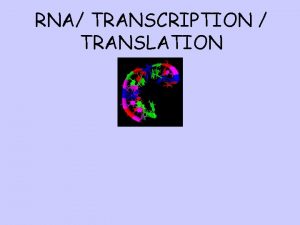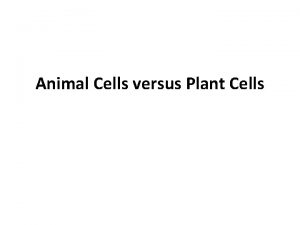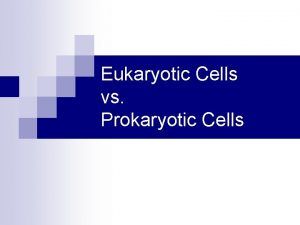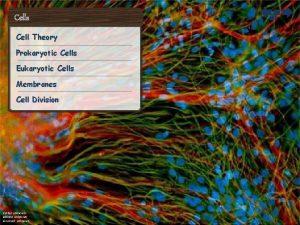RNA processing and Translation Eukaryotic cells modify RNA



















- Slides: 19

RNA processing and Translation

Eukaryotic cells modify RNA after transcription (RNA processing) • During RNA processing, both ends of the primary transcript are usually altered • Also, usually some interior parts of the molecule are cut out, and the other parts spliced together Copyright © 2008 Pearson Education Inc. , publishing as Pearson Benjamin Cummings

Split Genes and RNA Splicing • Most eukaryotic genes and their RNA transcripts have long noncoding stretches of nucleotides that lie between coding regions • These noncoding regions are called intervening sequences, or introns • The other regions are called exons because they are eventually expressed, usually translated into amino acid sequences • RNA splicing removes introns and joins exons, creating an m. RNA molecule with a continuous coding sequence Copyright © 2008 Pearson Education Inc. , publishing as Pearson Benjamin Cummings

Fig. 17 -10 5�Exon Intron Pre-m. RNA Exon Intron Poly-A tail 5�Cap 1 30 31 Coding segment m. RNA 3� 5�Cap 1 5�UTR 104 105 146 Introns cut out and exons spliced together Poly-A tail 146 3�UTR

Molecular Components of Translation • A cell translates an m. RNA message into protein with the help of transfer RNA (t. RNA) • Molecules of t. RNA are not identical: – Each carries a specific amino acid on one end – Each has an anticodon on the other end; the anticodon base-pairs with a complementary codon on m. RNA Copyright © 2008 Pearson Education Inc. , publishing as Pearson Benjamin Cummings

Fig. 17 -13 Amino acids Polypeptide Tr p Ribosome t. RNA with amino acid attached Phe Gly t. RNA Anticodon Codons 5� m. RNA 3�

• Accurate translation requires two steps: – First: a correct match between a t. RNA and an amino acid, done by the enzyme aminoacyl-t. RNA synthetase – Second: a correct match between the t. RNA anticodon and an m. RNA codon Copyright © 2008 Pearson Education Inc. , publishing as Pearson Benjamin Cummings

Fig. 17 -15 -4 Aminoacyl-t. RNA synthetase (enzyme) Amino acid P P P Adenosine ATP P Adenosine P Pi Pi P i t. RNA Aminoacyl-t. RNA synthetase t. RNA P Adenosine AMP Computer model Aminoacyl-t. RNA (“charged t. RNA”)

Ribosomes • The two ribosomal subunits (large and small) are made of proteins and ribosomal RNA (r. RNA) • A ribosome has three binding sites for t. RNA: – The P site holds the t. RNA that carries the growing polypeptide chain – The A site holds the t. RNA that carries the next amino acid to be added to the chain – The E site is the exit site, where discharged t. RNAs leave the ribosome Copyright © 2008 Pearson Education Inc. , publishing as Pearson Benjamin Cummings

Fig. 17 -16 Growing polypeptide t. RNA molecules Exit tunnel Large subunit EP A Small subunit 5� m. RNA 3� (a) Computer model of functioning ribosome P site (Peptidyl-t. RNA binding site) E site (Exit site) A site (Aminoacylt. RNA binding site) E P A m. RNA binding site Large subunit Small subunit (b) Schematic model showing binding sites Growing polypeptide Amino end Next amino acid to be added to polypeptide chain m. RNA 5� E t. RNA 3� Codons (c) Schematic model with m. RNA and t. RNA

Building a Polypeptide • The three stages of translation: – Initiation – Elongation – Termination Copyright © 2008 Pearson Education Inc. , publishing as Pearson Benjamin Cummings

Ribosome Association and Initiation of Translation • The initiation stage of translation brings together m. RNA, a t. RNA with the first amino acid, and the two ribosomal subunits • First, a small ribosomal subunit binds with m. RNA and a special initiator t. RNA • Then the small subunit moves along the m. RNA until it reaches the start codon (AUG) • Proteins called initiation factors bring in the large subunit that completes the translation initiation complex Copyright © 2008 Pearson Education Inc. , publishing as Pearson Benjamin Cummings

Fig. 17 -17 3� U A C 5� A U G 3� Met 5� Initiator t. RNA m. RNA 5� P site GTP Start codon m. RNA binding site 3� Small ribosomal subunit Met Large ribosomal subunit GDP E 5� A 3� Translation initiation complex

Elongation of the Polypeptide Chain • During the elongation stage, amino acids are added one by one to the preceding amino acid • Three steps: codon recognition, peptide bond formation, and translocation Copyright © 2008 Pearson Education Inc. , publishing as Pearson Benjamin Cummings

Fig. 17 -18 -4 Amino end of polypeptide E 3� m. RNA Ribosome ready for next aminoacyl t. RNA P A site 5� GTP GDP E E P A GDP GTP E P A

Termination of Translation • Termination occurs when a stop codon in the m. RNA reaches the A site of the ribosome • A water molecule is then added instead of an amino acid • This reaction releases the polypeptide, and the translation assembly then comes apart Translation Transcription/Translation Copyright © 2008 Pearson Education Inc. , publishing as Pearson Benjamin Cummings Transcription/Transation

Targeting Polypeptides to Specific Locations • Two populations of ribosomes are evident in cells: free ribsomes (in the cytosol) and bound ribosomes (attached to the ER) • Free ribosomes mostly synthesize proteins that function in the cytosol • Bound ribosomes make proteins of the endomembrane system and proteins that are secreted from the cell

Point mutations can affect protein structure and function • Mutations are changes in the genetic material of a cell or virus • Point mutations are chemical changes in just one base pair of a gene • Point mutations within a gene can be divided into two general categories – Base-pair substitutions – Base-pair insertions or deletions Copyright © 2008 Pearson Education Inc. , publishing as Pearson Benjamin Cummings

Fig. 17 -25 DNA TRANSCRIPTION 3� A ly- Po RNA polymerase 5�RNA transcript RNA PROCESSING Exon RNA transcript (pre-m. RNA) Intron Aminoacyl-t. RNA synthetase -A Poly NUCLEUS Amino acid CYTOPLASM AMINO ACID ACTIVATION t. RNA m. RNA E 3� p Ca A P Growing polypeptide Ribosomal subunits l Po Cap 5� TRANSLATION E A Codon Ribosome Anticodon A y- Activated amino acid
 Prokaryote vs eukaryote cells
Prokaryote vs eukaryote cells Prokaryotes vs eukaryotes venn diagram
Prokaryotes vs eukaryotes venn diagram Prokaryotic cells vs eukaryotic cells
Prokaryotic cells vs eukaryotic cells Is a red blood cell prokaryotic or eukaryotic
Is a red blood cell prokaryotic or eukaryotic Cell theory 3 parts
Cell theory 3 parts Is protist a prokaryote or eukaryote
Is protist a prokaryote or eukaryote Similarity between prokaryotic and eukaryotic cells
Similarity between prokaryotic and eukaryotic cells Answers
Answers Prokaryotic and eukaryotic cells chart
Prokaryotic and eukaryotic cells chart Pro karyote
Pro karyote How water moves
How water moves Difference between prokaryotic and eukaryotic cells
Difference between prokaryotic and eukaryotic cells Prokaryotic
Prokaryotic Anatomy of prokaryotes and eukaryotes
Anatomy of prokaryotes and eukaryotes Most prominent organelle in eukaryotic cells
Most prominent organelle in eukaryotic cells Eukaryotic cells
Eukaryotic cells Organelles in eukaryotic cells worksheet
Organelles in eukaryotic cells worksheet Eukaryotic cells
Eukaryotic cells Nonliving cells
Nonliving cells Eukaryotic plant cell
Eukaryotic plant cell






